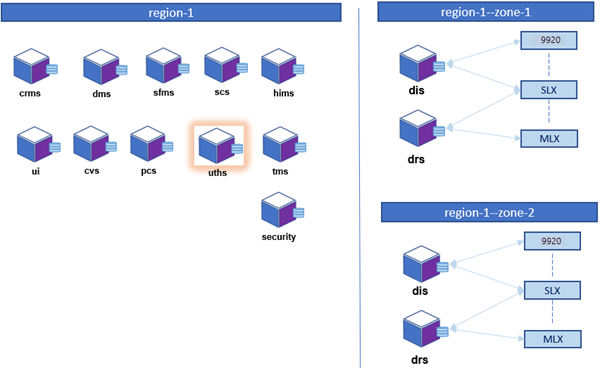Visibility Manager Microservices
The Visibility Manager microservices work together to provide and control the functionality of the application.
Most of the microservices reside in the region nodes. The DIS and DRS reside in the region and zone nodes and pass information to and from the UTHS.

Logs for each microservice are saved in /var/log/xvm. For details, see Microservice Logs.
| Microservice | Description |
|---|---|
| Cluster Resource Management Service (CRMS) |
|
| Configuration Validate Service (CVS) | Supports basic validation for user interface requests and acts as cache and user interface helper |
| Device Health and Incident Management Service (DHMS) | Monitors and persists device states by collecting syslogs and RASlogs from devices |
| Device Interface Service (DIS) |
|
| Device and Zone Management Service (DMS) |
|
| Device Receive Service (DRS) |
|
| Policy Control Service (PCS) | Maintains a library of policies and ACLs that can be reused across multiple devices |
| Security | Supports the following:
|
| Service Function Management Service (SFMS) |
|
| Statistics Collection Service (SCS) | Collects and persists statistics from devices for various device configuration and on physical ports |
| Transaction Management Service (TMS) |
|
| User Interface (UI) | Provides access and functionality for managing and monitoring devices |
| User Transaction History Service (UTHS) |
|
